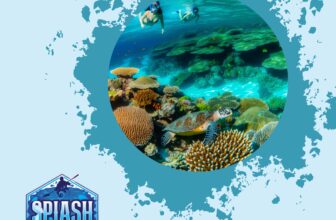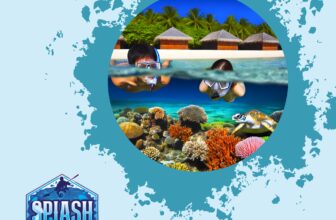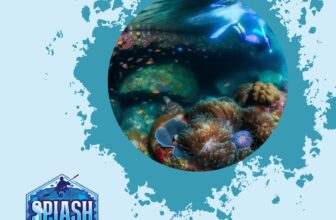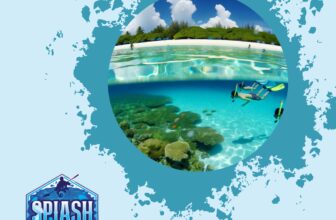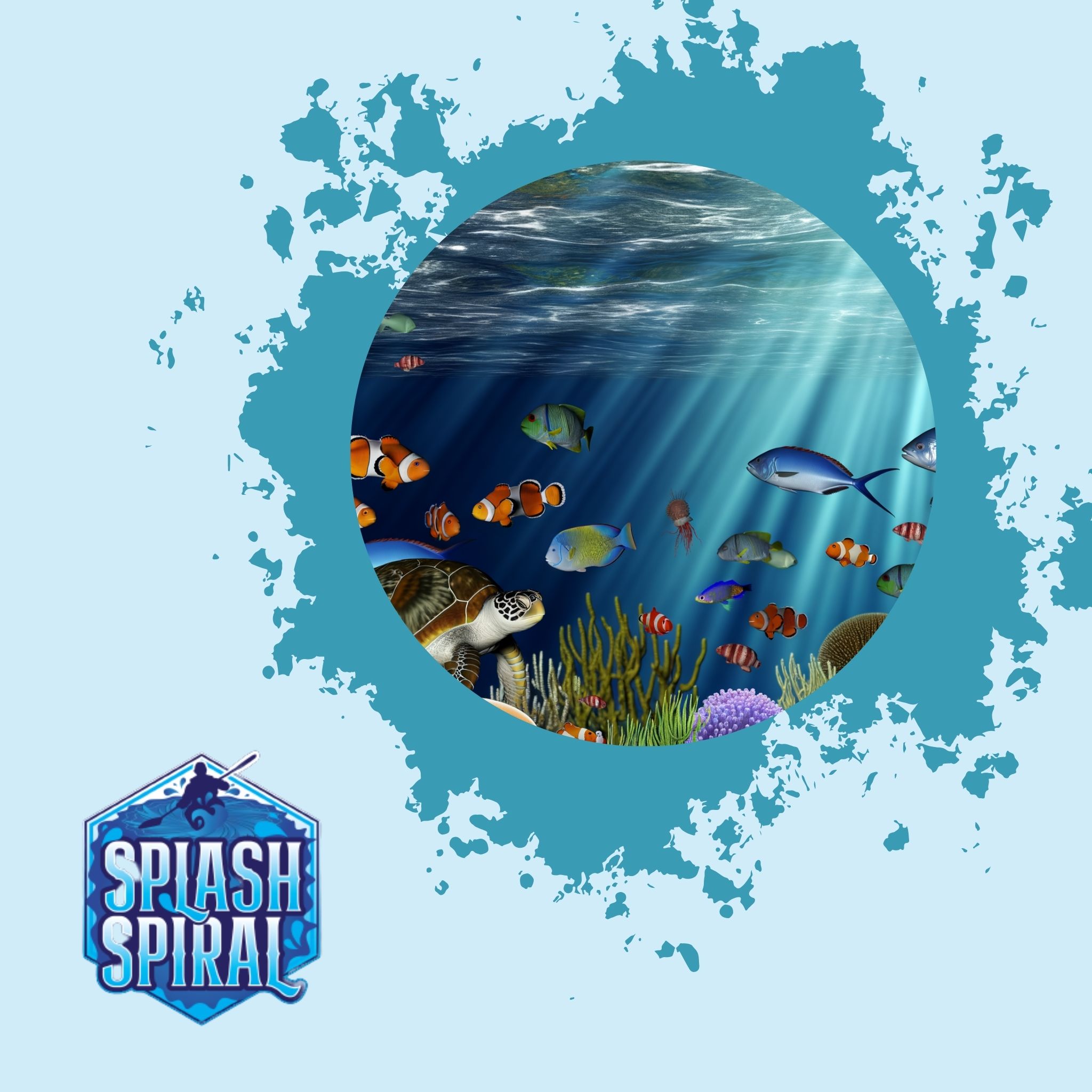
The Caribbean offers some of the best snorkeling experiences on Earth, thanks to its crystal-clear waters, colorful coral reefs, and diverse marine life. Whether you're a beginner or a seasoned snorkeler, Caribbean marine reserves provide numerous opportunities to explore vibrant underwater worlds. Let's dive into some of these incredible marine reserves, their unique offerings, and how to make the most out of your snorkeling adventure.
The Importance of Caribbean Marine Reserves
Marine reserves in the Caribbean are more than just pretty underwater landscapes; they are crucial for preserving some of the most delicate ecosystems on our planet. Here's why they matter:
Marine Conservation Efforts
Marine reserves play a pivotal role in conservation by creating safe havens for marine life. These protected zones are off-limits to destructive activities like overfishing, mining, and unregulated tourism. By curbing these disruptions, reserves allow ecosystems to recover and thrive. For beginner snorkelers, this means you get to experience environments teeming with life that might otherwise be depleted.
Biodiversity Hotspots
The Caribbean is a biodiversity hotspot, hosting a plethora of marine species ranging from diminutive, colorful fish to massive, awe-inspiring corals. These reserves ensure that such biodiversity is preserved for future generations. When you snorkel in these waters, you're not just seeing fish and coral; you’re witnessing a finely balanced ecosystem that supports myriad life forms. This kind of biodiversity makes snorkeling here an unparalleled adventure, offering something new and exciting each time you dip beneath the waves.
Understanding the importance of these marine reserves adds another layer of appreciation to your snorkeling journey. Realizing that your visit supports ongoing conservation efforts can make your experience feel even more impactful. So, grab your snorkel gear and dive into these natural wonders with respect and wonder; the vibrant underwater realms of the Caribbean await you.
Top Caribbean Marine Reserves
1. Belize Barrier Reef Reserve System
-
Overview:
- Home to the second-largest reef system in the world.
- Stretches over 190 miles along the coast of Belize.
- A UNESCO World Heritage Site featuring coral reefs, mangroves, atolls, and lagoons.
-
Unique Features:
- Teems with over 500 species of fish and 100 different species of coral.
- Encounters with stingrays, parrotfish, and other vibrant marine life are common.
-
Snorkeling Highlights:
-
Hol Chan Marine Reserve: Famous for Shark Ray Alley, where you can swim alongside nurse sharks and southern stingrays.
-
Great Blue Hole: A massive submarine sinkhole offering incredible underwater views, ideal for advanced snorkelers and divers.
2. Bonaire National Marine Park
-
Overview:
- Known for pristine and exceptionally clear waters.
- Located in the southern Caribbean with established marine conservation since 1979.
-
Unique Features:
- Encompasses the entire coastline of Bonaire, protecting coral reefs, seagrass beds, and mangroves.
- Home to sea turtles, barracudas, and various tropical fish.
-
Snorkeling Highlights:
-
Bari Reef: One of the most biodiverse spots in the Caribbean.
-
Lac Bay: Ideal for snorkeling in seagrass beds teeming with juvenile marine life.
-
Night Snorkel: For witnessing nocturnal marine life.
3. Tobago Cays Marine Park
-
Overview:
- Located in the Southern Grenadines, comprising several small islands surrounded by a horseshoe-shaped reef.
- Offers unspoiled natural beauty both above and below the water surface.
-
Unique Features:
- Known for vibrant coral gardens, crystal-clear waters, and diverse marine ecosystems.
- Calm lagoons ideal for snorkeling enthusiasts.
-
Snorkeling Highlights:
-
Horseshoe Reef: Ideal for observing a variety of corals, sponges, and schools of blue tangs.
-
Look out for green turtles grazing in the sea grass and stingrays.
4. Saba Marine Park
-
Overview:
- Surrounds the small island of Saba, north of St. Eustatius in the Lesser Antilles.
- Known for extraordinary underwater landscapes; covers the entire island's coastline.
-
Unique Features:
- Volcanic origins lead to dramatic underwater topography with drop-offs, pinnacles, and lava tunnels.
- Supports rich marine life and coral formations.
-
Snorkeling Highlights:
-
Ladder Labyrinth: Offers intricate coral heads and abundant marine species.
-
Torrens Point: Features stunning coral formations and a variety of fish in shallow waters, accessible for beginners.
Conclusion
Exploring these top Caribbean marine reserves offers unforgettable snorkeling experiences full of vibrant marine life and stunning underwater landscapes.
How to Choose the Best Snorkeling Areas
Accessibility
First things first, you’ll want to consider how easy it is to reach your snorkeling site. Some spots might be a quick swim from the beach, while others could require a boat ride. If you’re a beginner, aim for locations that are easily accessible and not too far from the shore. Beaches and shallow reefs are great starting points because they’re usually more manageable and less intimidating. Do some research or ask locals about the best entry points to save yourself from unnecessary hassle.
Water Conditions
Knowing the water conditions can make or break your snorkeling experience. Check for factors like visibility, currents, and tides. Crystal-clear waters will allow you to see more marine life and vibrant corals, making your venture much more enjoyable. Avoid spots with strong currents or rough tides, especially if you’re new to snorkeling. Morning outings are often best due to calmer seas and better light. Again, local guides or snorkeling tours can provide valuable insights on when and where to snorkel safely.
Local Guidance
Don’t underestimate the value of local expertise. Utilize resources from local guides and dive shops to get the scoop on the best snorkeling areas. They know the water like the back of their hand and can direct you to hidden gems that aren’t in the guidebooks. Plus, they’ll be up-to-date on the latest water conditions and can offer gear rentals if needed. Not to mention, they can help you steer clear of protected or dangerous areas. For more information on finding local snorkeling guides in the Caribbean, check out this resource.
By focusing on these three key factors—accessibility, water conditions, and local guidance—you'll be well on your way to choosing the perfect snorkeling spot for your Caribbean adventure. Happy snorkeling!
Tips for Snorkeling in Marine Sanctuaries
Essential Gear
When gearing up for a snorkeling trip in marine sanctuaries, having the right equipment is crucial. Start with a good quality mask and snorkel. Look for masks with a snug fit that won't leak and a snorkel with a purge valve for easy clearing of water. Fins are also essential as they help you move smoothly through the water with less effort, making your experience more enjoyable. Consider wearing a rash guard or wetsuit for added protection against the sun and potential jellyfish stings. Don't forget a waterproof bag for your valuables and a reef-safe sunscreen to protect both your skin and the environment.
Safety Tips
Safety should always be a top priority when snorkeling. Pair up with a buddy; having someone with you ensures help is nearby if needed. Always check local weather and water conditions before heading out—strong currents and poor visibility can pose serious risks. Keep an eye on your surroundings and be aware of your limits; if you feel tired or uncomfortable, it's okay to cut your snorkeling session short. Lastly, learn basic hand signals for underwater communication and ensure family or friends onshore know your plans and expected return time.
Respecting Marine Life
When exploring marine sanctuaries, it's important to interact with the environment responsibly. Avoid touching or stepping on coral reefs, as they are delicate and can be easily damaged. Maintain a safe distance from marine animals—observe without interfering. Feeding fish or other creatures disrupts their natural behavior and ecosystem balance, so refrain from doing so. Take all trash back with you to ensure you leave the sanctuary as pristine as you found it. By following these guidelines, you'll help preserve these precious ecosystems for future generations to enjoy.
Coral Reserves and Their Significance
Coral reefs are often dubbed the "rainforests of the sea" due to their incredible biodiversity and ecological importance. Acting like bustling underwater cities, these ecosystems support a myriad of marine life, ranging from tiny plankton to imposing sharks. For beginner snorkelers, understanding the significance of coral reefs can enhance your appreciation and respect for these vibrant underwater structures.
Coral Ecosystems: Importance of Coral Reefs in the Marine Environment
Coral reefs provide essential services to marine life and humans alike. They act as natural barriers, protecting coastlines from erosion and storm surges. In terms of biodiversity, coral reefs are home to approximately one-quarter of all marine species, despite covering less than 1% of the ocean floor. Fish, invertebrates, and various plants rely on the complex structures of coral reefs for shelter, spawning grounds, and feeding.
Threats to Coral: Issues Like Climate Change and Pollution Affecting Coral Health
While coral reefs are resilient, they face numerous threats that jeopardize their health and existence. Climate change is one of the most significant threats, causing ocean temperatures to rise. This warming leads to coral bleaching, a stress response where corals expel the symbiotic algae that provide them with nutrients and color. Without these algae, corals can starve and die.
Pollution is another major issue, particularly from plastic waste, agricultural runoff, and chemical discharges that contaminate water and harm marine life. Overfishing and destructive fishing practices also disrupt the delicate balance of reef ecosystems, often leading to a decline in coral health and biodiversity.
Conservation Programs: Efforts to Protect and Rehabilitate Coral Reefs
Efforts to mitigate these threats and rehabilitate coral reefs are ongoing and crucial. Numerous organizations and governments are working to establish marine protected areas (MPAs) and enforce regulations that limit harmful human activities. Coral farming and reef restoration projects are also gaining traction, with scientists cultivating coral fragments in nurseries before transplanting them onto damaged reefs.
Additionally, public education and awareness campaigns are vital for promoting sustainable practices among tourists and local communities. As snorkelers, you play a pivotal role in reef conservation by following guidelines such as avoiding contact with corals, not collecting marine life, and using reef-safe sunscreen.
Understanding the significance of coral reserves and contributing to their conservation ensures that these magnificent underwater worlds continue to thrive for generations to come. Here’s to responsible snorkeling and the joy of discovering the splendor of coral reefs in the Caribbean.
Hidden Snorkeling Gems in the Caribbean
Off-the-Beaten-Path Locations
Looking to escape the crowds and discover something truly special? The Caribbean boasts several lesser-known snorkeling spots that offer privacy and unparalleled beauty. One such gem is Little Tobago, an island off the coast of Tobago. Its surrounding waters are teeming with vibrant coral gardens and diverse marine life, making it ideal for those looking to explore more secluded waters.
Another hidden treasure is Isla Caja de Muertos near Puerto Rico. It may not appear on every traveler's radar, but its pristine waters and untouched reefs provide a serene snorkeling experience. You'll likely have vast stretches of the ocean all to yourself, giving you ample time to absorb the stunning underwater scenery.
More info on these secret spots here.
Unique Wildlife Encounters
Hidden snorkel spots often mean unique encounters with marine life that you might miss at more popular locations. For example, the waters around Anegada in the British Virgin Islands are known for housing rare species like the green sea turtle and even the occasional nurse shark. These waters are not frequently visited, allowing the local wildlife to thrive in a less disturbed habitat.
The Grenadine island of Bequia offers another off-the-beaten-path experience. Its reefs attract an array of marine creatures, including the seldom-seen frogfish and seahorses. These spots provide a more personal and intimate snorkeling adventure where you can encounter wildlife at its most natural, undisturbed by heavy tourist traffic.
Engaging in Wildlife Exploration
Marine Life Diversity
One of the most exciting aspects of snorkeling in Caribbean marine reserves is the chance to encounter a diverse range of marine life. From shimmering schools of tropical fish to graceful sea turtles, the underwater world is teeming with creatures that can make your snorkeling experience truly memorable. Keep an eye out for vibrant parrotfish, curious angelfish, and even the elusive spotted eagle ray. Each species brings its own unique flair to the underwater ecosystem, making every snorkeling trip a new adventure.
Best Practices
While the prospect of getting up close with marine life is thrilling, it’s crucial to observe some best practices to ensure both your safety and the well-being of the wildlife. Always keep a respectful distance from animals, avoiding any actions that might stress or harm them. Touching coral or marine creatures is a big no-no, as it can cause damage to delicate ecosystems and potentially harm you. Float calmly on the water’s surface and let the wildlife come to you—patience often results in the most rewarding encounters.
Educational Opportunities
Snorkeling isn’t just a recreational activity; it’s also a fantastic educational opportunity. Many marine parks offer guided tours with marine biologists who can provide in-depth knowledge about the underwater environment and its inhabitants. These tours can greatly enhance your understanding and appreciation of marine ecosystems. For those looking to expand their knowledge further, several organizations offer courses on marine biology, conservation, and sustainable snorkeling practices. Engaging in these educational opportunities can deepen your connection to the marine world and inspire a lifelong commitment to its preservation.
Utilizing Resources and Further Reading
To make the most out of your Caribbean snorkeling adventure, leveraging the right resources is key. Local experts, such as guides and diving centers, can provide invaluable insights into the best snorkeling spots, optimal times for visibility, and safety practices. Building a rapport with these professionals not only enhances your experience but also supports local economies. You can find some of these resources by checking here.
In addition to local expertise, online information offers a treasure trove of valuable tips and updates on snorkeling conditions. Websites specializing in Caribbean marine adventures, such as forums, articles, and travel blogs, can guide you towards hidden snorkeling gems and offer gear recommendations tailored for beginners. Trustworthy sources will also update you on any environmental conservation efforts or changes in marine reserve regulations that could affect your plans. Dive into a variety of reliable online materials to enrich your snorkeling knowledge.
By combining local expertise with comprehensive online resources, you'll be well-prepared to explore the stunning underwater realms of the Caribbean.
Conclusion
Exploring the Caribbean marine reserves offers a glimpse into some of the most beautiful and vibrant underwater worlds. By understanding the significance of these areas, choosing the best snorkeling spots, and following sustainable practices, you can ensure an unforgettable and responsible snorkeling experience.
Highlights of Caribbean Marine Reserves
- Belize Barrier Reef: Home to breathtaking underwater vistas.
- Bonaire: Known for its crystal-clear waters.
Tips for a Memorable and Responsible Snorkeling Experience
-
Pack the Right Gear:
- Snorkel
- Mask
- Fins
- Rash guard or wetsuit
-
Stay Mindful of Safety:
- Check weather conditions
- Snorkel with a buddy
- Know your limits
-
Respect Marine Life and Ecosystems:
- Do not touch or disturb coral reefs and marine animals.
- Avoid feeding the fish.
- Use reef-safe sunscreen.
These simple practices not only enhance your personal adventure but also contribute to the preservation of these precious underwater sanctuaries for future generations to enjoy.
Dive deeper into more information on snorkeling and marine explorations here.



